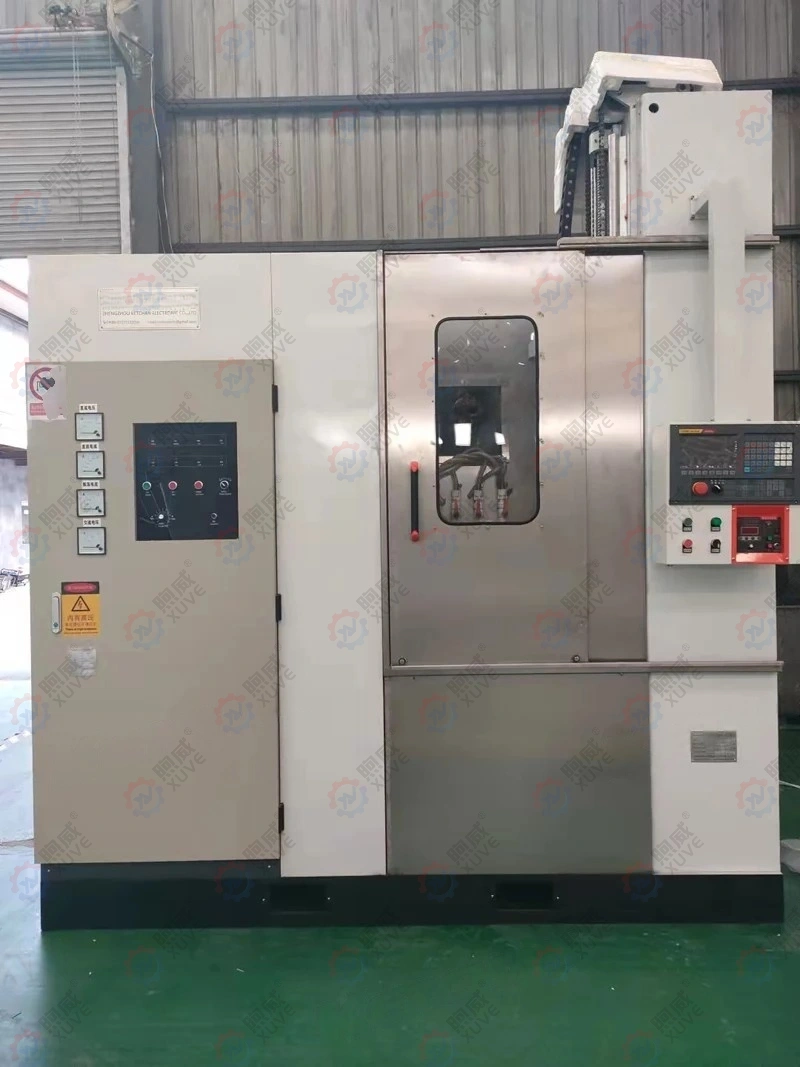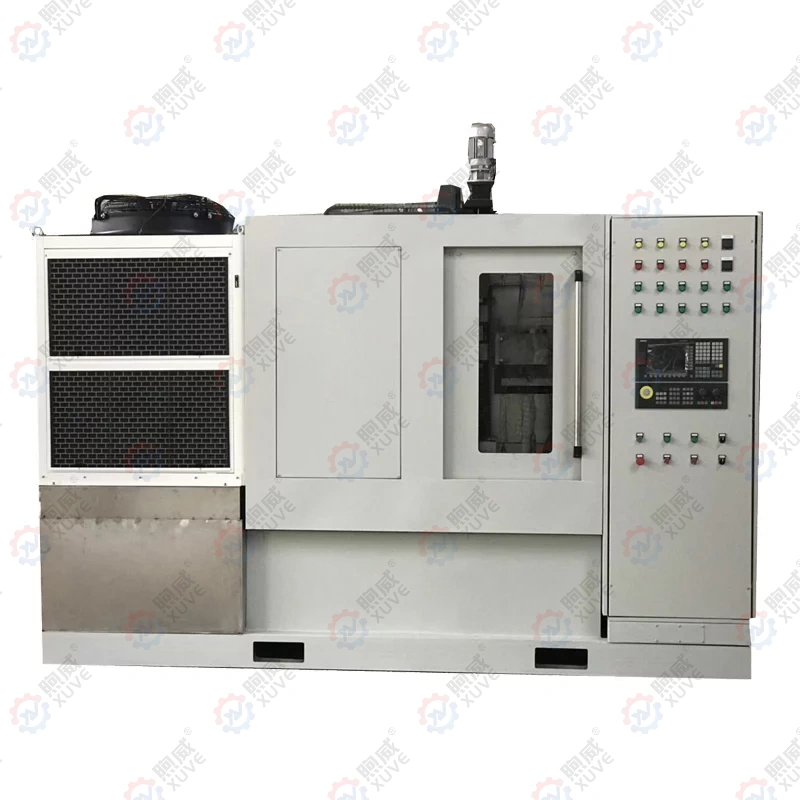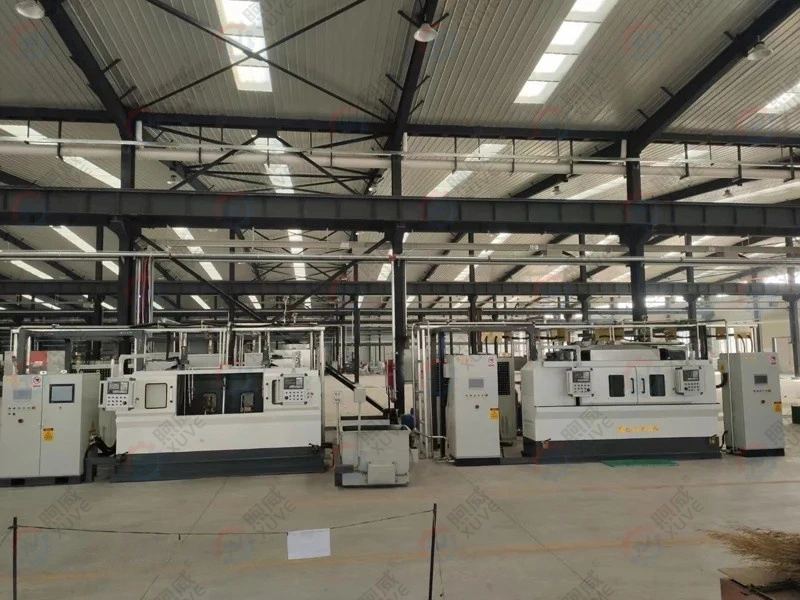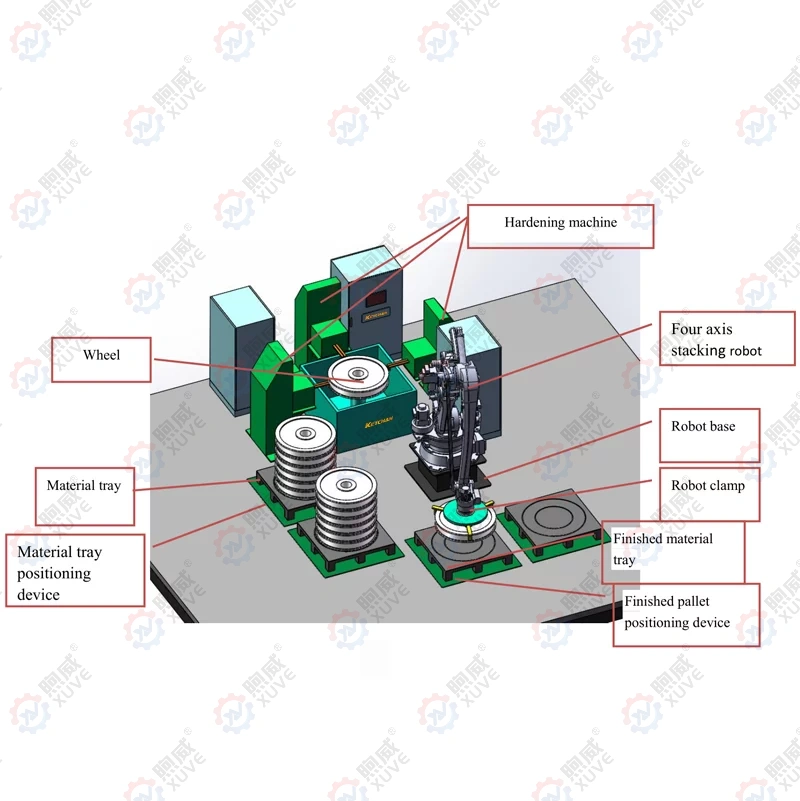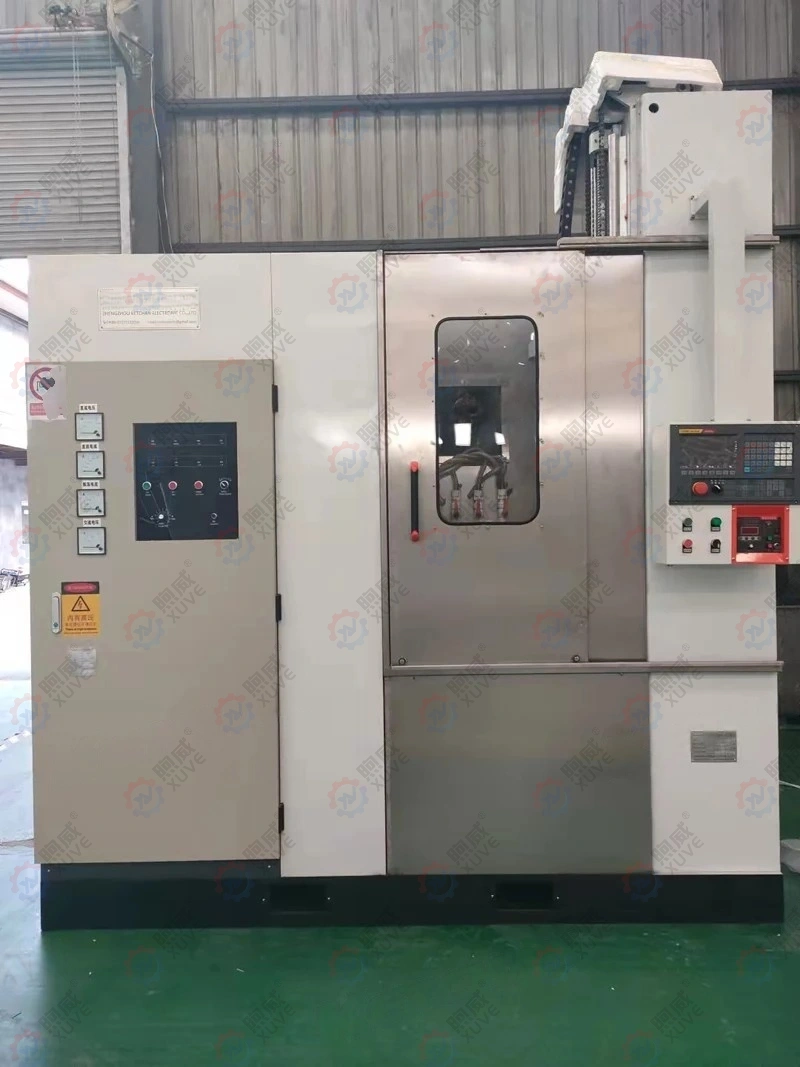What’s CNC induction hardening machine structure?
CNC induction hardening machine is mainly composed of three parts: CNC quenching machine tool, induction heating power supply (medium frequency induction heating power supply, high frequency induction heating power supply, ultra high frequency induction heating power supply), and water cooling device;
The medium and high frequency CNC quenching machine tool is composed of the bed, the upper and lower clamping mechanism, the clamping and rotating mechanism, the quenching transformer and the resonance tank circuit, and the cooling system, the quenching liquid circulation system, and the electrical control system, etc.
CNC induction hardening machine tools are generally single-station (double-station quenching machine tools can be used for small diameter workpieces).There are two types of induction quenching machine tools, vertical type and horizontal type.
Users can choose CNC hardening machine tools according to the induction quenching process requests. For special parts or special processes, special CNC quenching machine tools can be designed and manufactured according to the heating treatment process requirements.
What’s CNC induction hardening machine features?
- Bed part: The CNC induction hardening machine tool adopts a welded bed structure, and the whole bed part has done the stress relief annealing treatment. The surface of the main exposed parts is specially treated and has good anti-rust and anti-corrosion properties.
- Upper center adjustment mechanism: The upper center adjustment adopts electric adjustment, which can realize the different lengths workpiece clamping.
- Worktable system: The stepper motor is used to drive the ball screw through the speed change mechanism to realize the upper worktable lifting movement. The moving speed is steplessly adjustable, the transmission is light, the guiding precision is high, and the positioning is accurate.
- Spindle rotation system: the asynchronous motor drives the spindle to rotate through the speed change mechanism and the transmission shaft. The frequency conversion speed regulation is adopted to realize the hardening parts speed stepless regulation.
- Cover frame: The cover frame is made of a thick steel plate. Well-made, beautiful in appearance in color. The upper part of the cover frame is provided with a glass window and a sliding door, which not only prevents the cooling water from splashing out but also facilitates loading and unloading parts and monitoring the quenching process.
- Electrical control part: The electrical control part is composed of the numerical control system, frequency conversion speed controller, intermediate relay, etc. Power supply line: 3-phase, 380V, 1.5Kw; it can store more than 20 kinds of parts induction quenching processes, and various programs can be programmed and stored through the numerical control keyboard. T The machine tool is equipped with functions such as power loss protection and offside protection, which have high safety and reliability.
What’s CNC induction hardening machine applications?
The CNC induction hardening machine is widely used in the modern metal induction heat treatment process, and mostly used in the following fields:
- End face and plane induction hardening series: perform overall or partial quenching on the mechanical parts end faces and plane parts, such as machine tool guide rails induction hardening, linear slide rails induction quenching, etc
- Outer circle induction quenching series: Overall or partial induction quenching of the outer surface of various shafts, rods, tubes, and circular parts, such as bearings, valves, etc.
- Extra large parts quenching series: Overall or partial quenching of large and heavy parts, such as marine gears, dam sluice rails, large oil pipelines, rollers, etc. induction heat treating projects.
- Inner circle induction quenching series: Overall or partial quenching of the inner circle of various pipes and mechanical parts, such as cylinder liners, shaft sleeves, etc. Inner hole induction hardening solutions.
- Special-shaped parts quenching series: Perform overall or partial quenching on a certain surface of special-shaped parts, such as automobile crankshafts, camshafts, etc. Induction heat treating solutions.
How to improve the CNC induction hardening machine work efficiency ?
Induction hardening coil can be divided into Power frequency, low frequency, medium frequency, high frequency, and ultrahigh frequency induction machines. According to the hardening depth requests choose the suitable frequency ranges. The higher the induction hardening depth, the lower frequency should be. The low the induction hardening depth requests, the higher the frequency level should be.
- To strengthen the coupling between the induction quenching machine tool and the workpiece. In short, is to reduce the gap between the effective coil and the heating surface, especially the inner hole and the plane inductor. The gap size has a great influence on efficiency.
- Reduce the length of the conductive plate or return leg and increase the width (conductive cross-section) of this section to reduce resistive losses.
- The effective induction coil is fitted with a magnetic conductor to reduce the stray magnetic field, which is not only suitable for the inner hole and plane heating and quenching machine tool inductors, but also for external heating inductors, such as gear external heating inductors.
- Multi-turn inductors are often more efficient than single-turn inductors when matched properly.
- In addition to reducing resistive losses, also consider inductive losses on the CNC quenching machine tool inductor. The gap between the two conductive plates should not be large but should be between 1-2mm. Several effective loops in series should be properly arranged to reduce inductance.


